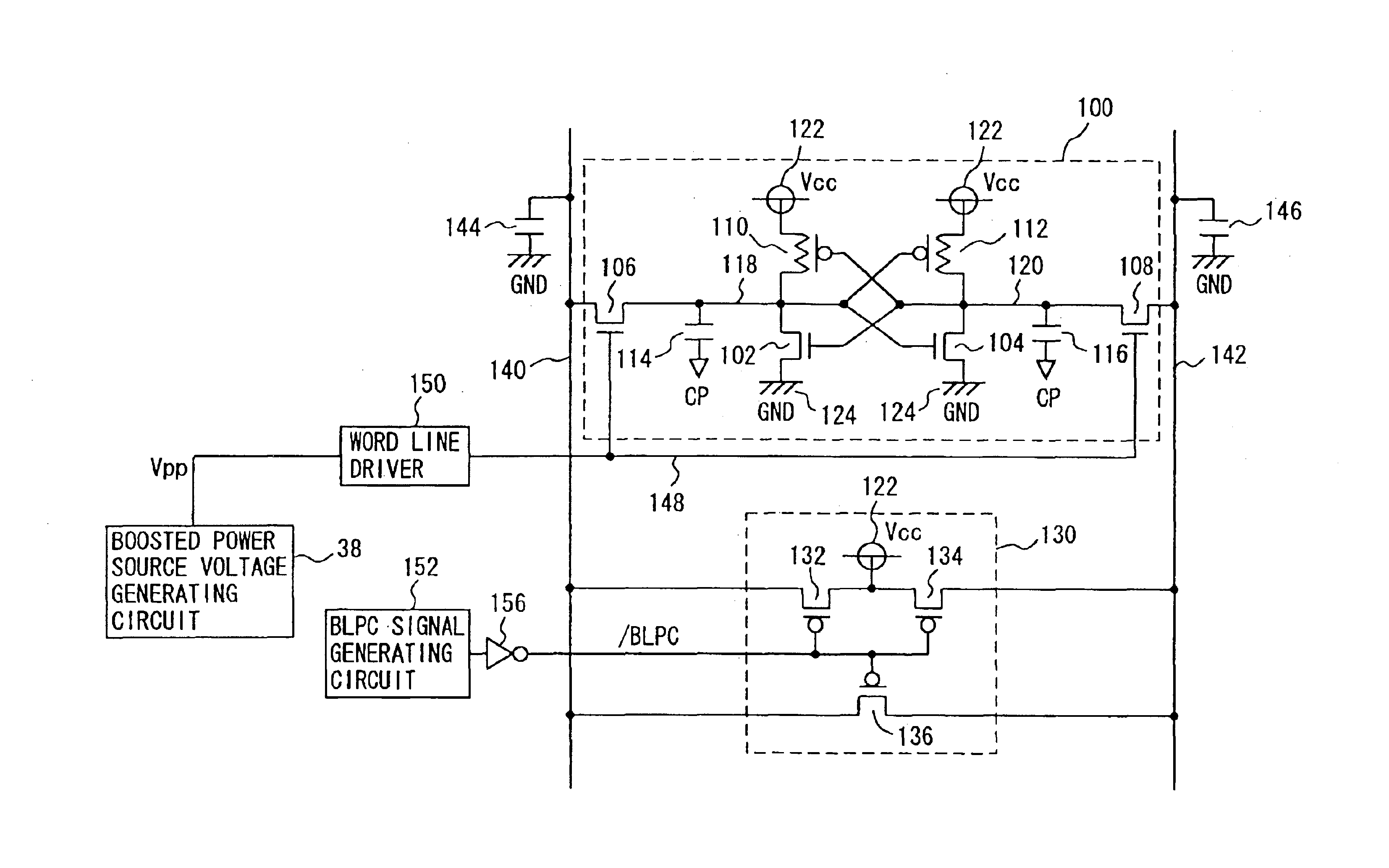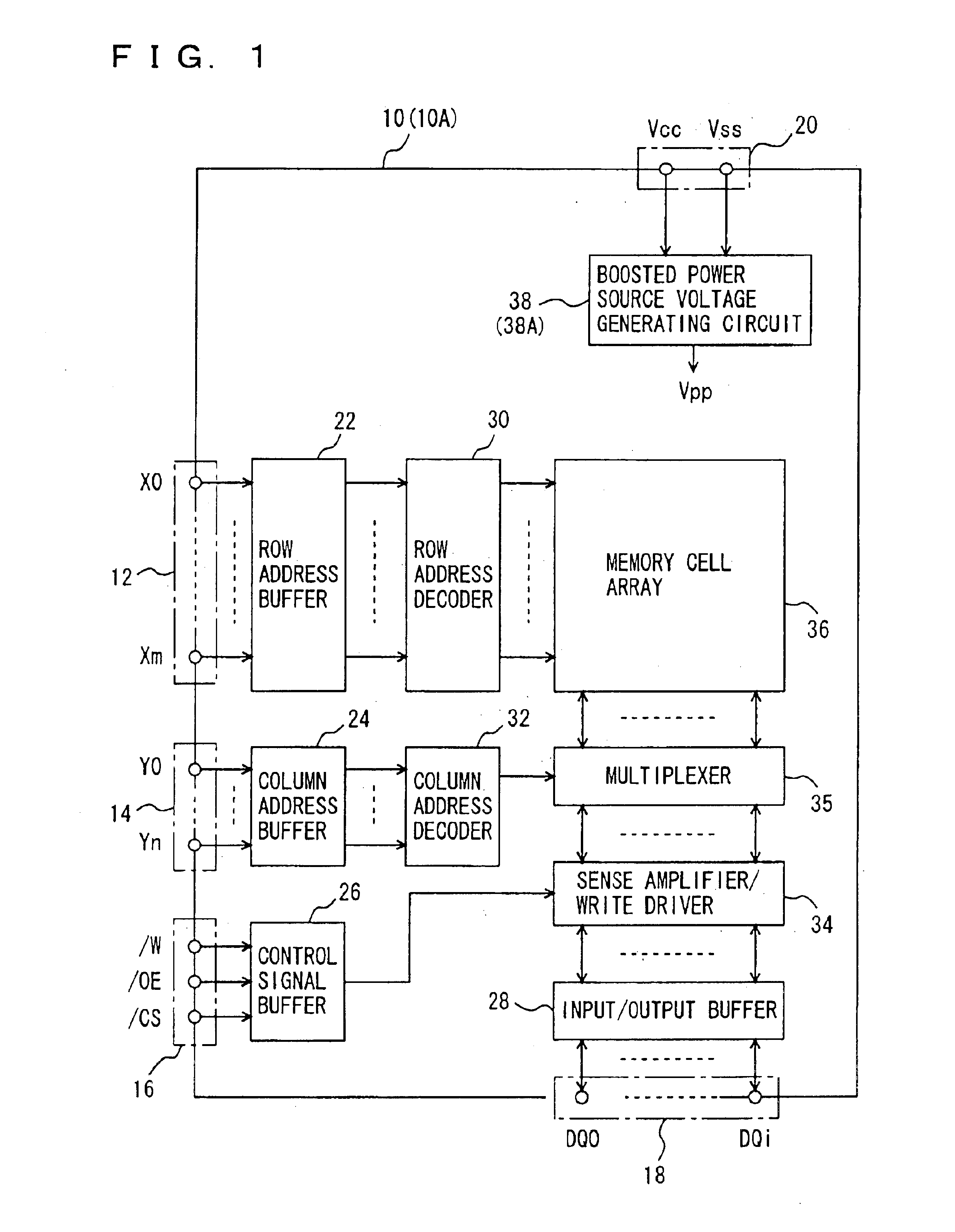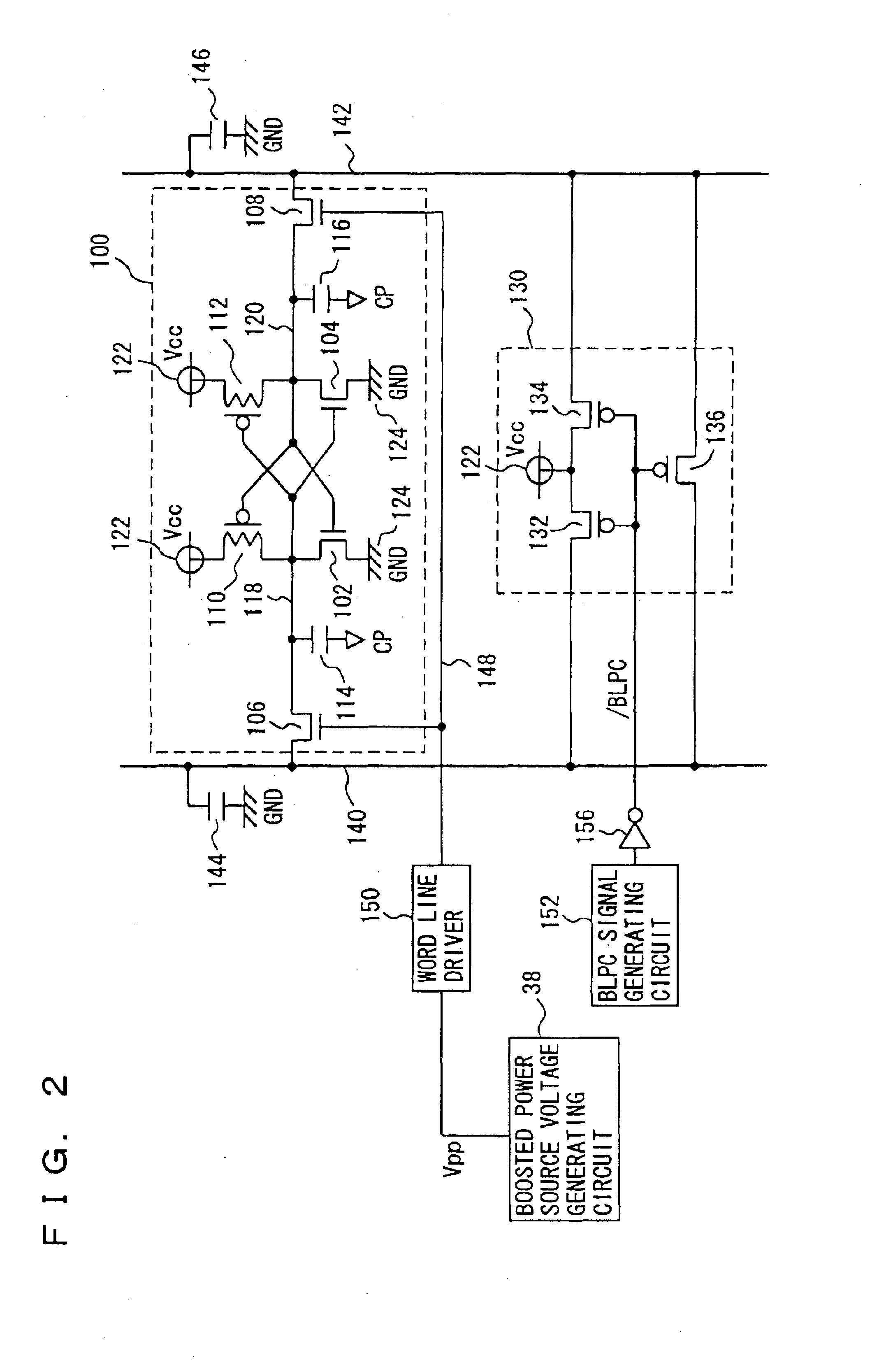Semiconductor memory device with memory cell having low cell ratio
a memory cell and semiconductor technology, applied in semiconductor devices, digital storage, instruments, etc., can solve the problems of data not being written, data being destroyed, impedance when the driver transistor is conductive too low, etc., to reduce the area of the memory cell, reduce the quantity of charges, and ensure the capacity value of the storage node included in the memory cell.
- Summary
- Abstract
- Description
- Claims
- Application Information
AI Technical Summary
Benefits of technology
Problems solved by technology
Method used
Image
Examples
first embodiment
FIG. 1 is a general block diagram conceptually showing the configuration of a semiconductor memory device 10 according to a first embodiment of the present invention.
Referring to FIG. 1, semiconductor memory device 10 has a row address terminal 12, a column address terminal 14, a control signal terminal 16, a data input / output terminal 18, and a power source terminal 20. Semiconductor memory device 10 also has a row address buffer 22, a column address buffer 24, a control signal buffer 26, and an input / output buffer 28. Further, semiconductor memory device 10 has a row address decoder 30, a column address decoder 32, a sense amplifier / write driver 34, a multiplexer 35, a memory cell array 36, and a boosted power source voltage generating circuit 38.
Row address terminal 12 and column address terminal 14 receive row address signals X0 to Xm and column address signals Y0 to Yn (m and n: natural numbers), respectively. Control signal terminal 16 receives a write control signal / W, an out...
second embodiment
In a second embodiment, a bit line precharge circuit is constructed by N-channel MOS transistors.
Referring again to FIG. 1, a semiconductor memory device 10A according to a second embodiment has a configuration similar to that of semiconductor memory device 10 according to the first embodiment except that a boosted power source voltage generating circuit 38A is provided in place of boosted power source voltage generating circuit 38. Boosted power source voltage generating circuit 38A is different from boosted power source voltage generating circuit 38 with respect to the points that it outputs generated voltage Vpp to a word line driver included in row address decoder 30 and also to a not-shown BLPC signal generating circuit.
Since the other configuration of semiconductor memory device 10A is the same as that of semiconductor memory device 10, its description will not be repeated.
FIG. 7 is a circuit diagram showing the configuration of one of memory cells arranged in a matrix in memo...
third embodiment
FIG. 8 is a general block diagram conceptually showing the configuration of a semiconductor memory device 10B according to a third embodiment of the present invention.
Referring to FIG. 8, semiconductor memory device 10B has a configuration similar to that of semiconductor memory device 10 according to the first embodiment shown in FIG. 1 except that a step-down power source generating circuit 40 is further provided and a boosted power source voltage generating circuit 38B and a memory cell array 36A are provided in place of boosted power source voltage generating circuit 38 and memory cell array 36, respectively.
Step-down power source generating circuit 40 receives power source voltage Vcc and ground voltage Vss from power source terminal 20, generates a voltage VDC which is a predetermined potential, and outputs generated voltage VDC to boosted power source voltage generating circuit 38A, a not-shown bit line precharge circuit, and a memory cell included in memory cell array 36A. S...
PUM
 Login to View More
Login to View More Abstract
Description
Claims
Application Information
 Login to View More
Login to View More - R&D
- Intellectual Property
- Life Sciences
- Materials
- Tech Scout
- Unparalleled Data Quality
- Higher Quality Content
- 60% Fewer Hallucinations
Browse by: Latest US Patents, China's latest patents, Technical Efficacy Thesaurus, Application Domain, Technology Topic, Popular Technical Reports.
© 2025 PatSnap. All rights reserved.Legal|Privacy policy|Modern Slavery Act Transparency Statement|Sitemap|About US| Contact US: help@patsnap.com



